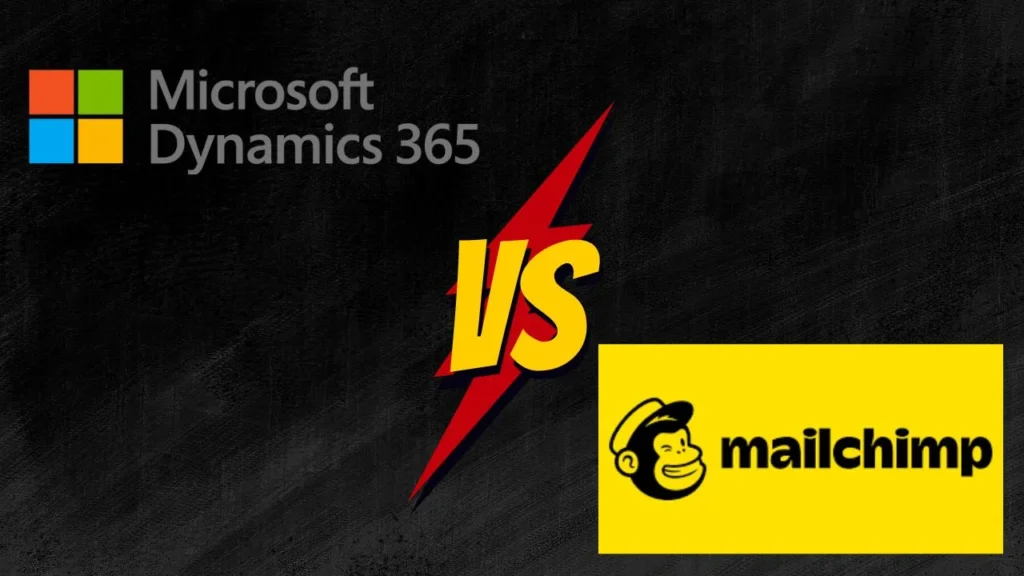Microsoft apps, such as MailChimp, are widely known for their efficiency, functionality, and ability to serve millions of users with seamless performance. These apps leverage several cutting-edge technologies, development frameworks, and design principles to deliver a smooth user experience, manage large datasets, and offer high-level integration capabilities. In this article, we’ll explore the core technologies behind apps like MailChimp, their benefits, and their impact on mobile app development costs. This will provide useful insights if you’re planning to develop Microsoft apps like MailChimp or similar platforms.
Table of Contents
ToggleIntroduction
In today’s digital age, businesses rely heavily on cloud-based applications to manage customer relations, automate marketing, and handle user data. MailChimp, for instance, is one of the most popular email marketing platforms, offering a wide range of marketing automation tools. Built using robust technologies, Microsoft-backed apps like MailChimp ensure high performance and scalability.
For developers and businesses considering building similar apps, understanding the underlying technology stack is critical. This not only helps in estimating the mobile app development cost but also provides insights into how to structure a scalable, feature-rich solution.
Core Technologies Behind Microsoft Apps Like MailChimp
Developing an app like MailChimp requires a mix of front-end, back-end, cloud, data management, and security technologies. Below are some key technologies that power such applications:
1. Cloud Computing (Microsoft Azure)
Cloud computing is essential in developing large-scale apps that can serve millions of users. Microsoft Azure is often used for cloud hosting, data storage, and computational resources for apps like MailChimp. Azure offers several features, such as load balancing, scalability, and virtual machines, that allow developers to deploy large applications effortlessly.
Azure’s seamless integration with development tools makes it easier for developers to create, test, and deploy applications across different platforms. Additionally, it provides robust security measures such as encryption and multi-factor authentication, making it ideal for handling sensitive data in apps like MailChimp.
Benefits of Azure:
- Scalability: Handle millions of users effortlessly.
- Security: Built-in compliance standards and encryption.
- Cost-effective: Offers pay-as-you-go services, helping control mobile app development costs.
2. Back-end development with .NET
For the back-end, Microsoft apps like MailChimp use the .NET framework. This framework is robust, versatile, and known for its extensive libraries, which make it easy to develop complex applications. The .NET framework supports multiple languages, including C#, VB.NET, and F#, which allows developers to choose the language they are most comfortable with.
.NET is also highly optimized for building cloud-based apps, with strong integration support for Microsoft Azure. The framework’s modular design helps in breaking down large projects into smaller, manageable components, which speeds up development and simplifies future updates or scaling efforts.
Benefits of .NET:
- High Performance: Optimized for large-scale applications.
- Versatility: Supports multiple programming languages.
- Integration: Seamlessly integrates with cloud platforms like Azure.
3. Data Storage and Management
Microsoft apps, especially those like MailChimp that handle massive amounts of user data, require efficient data storage solutions. Azure SQL Database is a highly reliable, scalable database service that is widely used in these scenarios.
For NoSQL databases, Azure Cosmos DB provides a globally distributed, multi-model database service. This database allows applications to store, retrieve, and analyze vast datasets efficiently. Apps like MailChimp also employ data warehouses and data lakes to store and analyze user behavior and email campaign performance.
Benefits of Azure Data Solutions:
- Scalability: Handle large datasets seamlessly.
- Reliability: High availability and fault tolerance.
- Global Reach: Data replication across multiple regions.
4. Front-End Technologies
The front end of Microsoft apps like MailChimp requires a dynamic and responsive user interface. Technologies such as ReactJS, AngularJS, and Blazor (for .NET apps) are commonly used for building the user interface.
These frameworks allow developers to create responsive and highly interactive UI/UX designs. ReactJS, in particular, is favored for its component-based architecture, which makes it easier to manage large-scale applications.
Benefits of ReactJS/AngularJS/Blazor:
- High Responsiveness: Deliver smooth user experiences.
- Component-Based Architecture: Makes code modular and reusable.
- Cross-Platform: Enables the development of both web and mobile interfaces efficiently.
5. APIs and Integration
MailChimp heavily relies on third-party integrations to enhance its functionality. RESTful APIs are commonly used to connect MailChimp with other apps, platforms, and CRMs. These APIs allow developers to build custom integrations, enabling MailChimp to interact with other services such as eCommerce platforms, content management systems (CMS), and analytics tools.
By using APIs, apps can provide users with a more seamless experience, pulling and pushing data between platforms without needing manual data transfers. Developers looking to develop Microsoft apps like MailChimp must ensure strong API support for effective data and feature integration.
Benefits of API Integration:
- Customization: Enable the addition of new features.
- Interoperability: Easily connects with third-party platforms.
- Efficiency: Saves time and effort in data handling.
6. AI and Machine Learning
Artificial Intelligence (AI) and Machine Learning (ML) are increasingly becoming important in email marketing automation platforms like MailChimp. AI helps in segmenting users, predicting customer behavior, and optimizing email campaigns for better engagement. Azure Machine Learning offers a suite of tools that allow developers to incorporate ML models into apps.
AI and ML can be used for:
- Predictive analytics: Forecasting customer behavior based on previous interactions.
- Automation: Automating email marketing tasks, such as sending personalized emails based on user behavior.
- Optimization: Enhancing campaign effectiveness by using algorithms to analyze and recommend content.
7. Security and Compliance
For an app like MailChimp that handles sensitive data, security is paramount. Azure Active Directory is a cloud-based identity and access management service that helps apps like MailChimp manage user identities and control access to the platform. Features such as multi-factor authentication (MFA), single sign-on (SSO), and role-based access control (RBAC) are essential in maintaining high-security levels.
Compliance with data privacy regulations, such as GDPR and CCPA, is also critical. Microsoft Azure provides built-in compliance certifications, helping developers meet these stringent requirements without adding significant mobile app development costs.
Security Features:
- Encryption: Both data-at-rest and data-in-transit encryption.
- Role-Based Access Control (RBAC): Limits user access to specific areas of the platform.
- Identity Management: Multi-factor authentication for added security.
Factors Impacting Mobile App Development Cost
When planning to develop Microsoft apps like MailChimp, several factors influence the overall mobile app development cost:
- Choice of Cloud Infrastructure: Opting for a premium service like Azure might increase initial costs but offers long-term benefits such as scalability, security, and performance.
- Framework and Language: Developing using frameworks like .NET or Blazor may require skilled developers, which can drive up development costs.
- Data Management: The complexity of data handling (SQL vs. NoSQL, real-time data streaming) can affect both development time and costs.
- APIs and Integrations: Extensive third-party integrations might require additional development hours and testing, increasing costs.
- AI and Machine Learning: Integrating AI/ML features for advanced functionality, such as predictive analytics, can add to development time and cost.
- Security and Compliance: Implementing enterprise-grade security features, such as end-to-end encryption and compliance certifications, requires specialized skills and may increase the budget.
Conclusion
Building Microsoft apps like MailChimp involves leveraging a combination of advanced technologies, including cloud computing, and back-end development frameworks like .NET, data management systems, and AI.
While the choice of technology stack can greatly impact the functionality and performance of the app, it also directly influences the mobile app development cost. By carefully selecting the right tools and infrastructure, developers can optimize both costs and app performance.
Whether you’re looking to develop Microsoft apps like MailChimp or another complex platform, understanding the core technologies and cost factors can set you on the right path toward building a successful, scalable, and secure solution.




